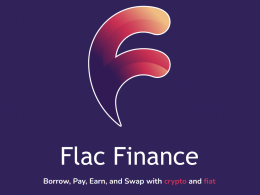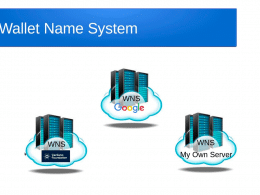The emergence and expansion of cryptocurrency as a viable alternative to fiat has swept the globe. More fortuitously, it’s rapidly sweeping away the cobwebs of central banking, onboarding new crew members daily as it voyages towards universal adoption. Bitcoin alone (created in 2009) reached a market cap of $1 trillion dollars this year, a feat which both Microsoft and Apple required decades to accomplish. Yet while crypto, or rather the blockchain acts as a bridge between freedom and oppression, central and decentralization, the homestretch still remains guarded. Having noticed a gap in the burgeoning new market, crypto currency exchanges (centralised) exploded across the internet, pouncing on the opportunity to profit at the expense of your independence.
Repulsive Kowtowing to Regulatory Commissions
Off-chain, centralised exchanges act as nothing more than outdated escrow services for their customers. They are vulnerable to attacks and conveniently timed crashes, they engage in repulsive kowtowing to regulatory commissions and above all, enforce verification procedures that exclude the unbanked. While once playing an essential role in the movement, the time of third party services has reached its end. Like the dying embers of a once soothing fire, their purpose has neared its completion, and their replacement is here. Thankfully, blockchain technology has delivered us from this bygone era, divorced us from the relic of the centralized exchange and placed us into the loving arms of a futuristic, trustless and fully decentralized economy.
Decentralized Exchanges For the Win!
Decentralized exchanges (DEXes) eradicate the problems of their centralized counterparts by utilising the blockchain to build peer to peer marketplaces (P2P). The benefits of DEXes speak for themselves when compared to their centralized counterparts. The exclusion of the middle man leads to cheaper transaction fees ( for the most part), while also granting more privacy, as there is no third party with access to your personal information, and other details which may leave one vulnerable to an array of undesirable outcomes. Security is now of huge concern within the cryptoworld, we all remember the infamous case of Mt.Gox, the centralized exchange which was hacked in both 2011 and 2014, and resulted in the theft of three quarters of a billion Bitcoins. Needless to say this exchange no longer exists. In fact, there are barely any advantages to centralized exchanges overall.
To centralize or decentralize? That’s barely the question that needs answering. Up until now, Uniswap has been the leading decentralized crypto exchange, constructed in 2018 and running on the ageing Ethereum blockchain, universally frowned upon for its atrociously high transaction fees and reluctance to innovate. It operates by running on two smart contracts, a ‘factory’ and ‘exchange’ contract. Both of which are automatic programs designed to perform specific functions, provided that certain conditions are met. The factory contract adds new tokens to the platform, while the exchange contract facilitates the swaps, provided of course that they are both ERC20 tokens. Token prices are determined using an ‘automated market maker’ (AMM) system, which adjusts an asset price based simply on supply and demand.
Can Cardano Accelerate into the Lead?
Uniswap has set the industry standard in terms of decentralized crypto exchanges. So where does that leave Cardano? Well, accelerating rapidly and taking over, if a company by the name of Polyswap has its way. If Cardano is to compete, and inevitably surpass Ethereum, then it’s imperative that we create our own decentralized exchange. Founded in February of this year (2021) by Daniel Salvadori, Polyswap will build and maintain an on-chain (within the blockchain) protocol, using Plutus smart contracts for trustless decentralized trading of native tokens. This arrives as a long overdue weapon in the already mighty arsenal of Cardano, and may be the weight that leaves both Uniswap and Ethereum treading water, if not drowning.
The Plan
With a background in machine learning and computer graphics, experience in homomorphic encryption as well as probabilistic programming languages, the sound, if not, sonic boom of Daniel’s credentials speak loudly enough for themselves. While currently working alone on Polyswap, Daniel is scouting for developers with a strong math and Haskell/Plutus background.
So how and why will Polyswap be better than Uniswap? There are future plans to allow liquidity providers to deposit single token types (instead of pairs). However, for now, the aim is simply to match the capabilities of UniswapV2. When implemented on the Cardano blockchain and all the benefits surrounding it, this in itself would leave few, (if any) reasons to remain bound to anything associated with Ethereum.
Current Roadmap
- Write and test Plutus smart contracts. On-chain code will be written in Plutus Tx directly. They will first simulate the contracts, then test them on the testnet. Our initial contracts will be based on Uniswap V2, with a few modifications.
- Build a fully-featured website at Polyswap. They will write documentation on how the protocol works and how to use it.
- Integrate with Daedalus wallet. They are planning on adding another tab to the Daedalus wallet from where users can directly exchange tokens using Polyswap. They will build it and then propose the integration to IOHK.
- Launch the same day Goguen goes live on mainnet!
Future Roadmap
- Allow transactions from the Polyswap website directly.
- Improve the protocol to allow liquidity providers to deposit token pairs in arbitrary proportions, even deposit only one type of token!
What’s the Cost for a DEX on Cardano?
Polyswap is requesting $50,000 in funding to oversee the development of its project. The goal is to use all of the funding to kickstart the initial liquidity pools. Meaning the funds will be used to buy token pairs which will be deposited in the initial Polyswap liquidity pools, so people can start trading on Polyswap as soon as possible. The funding will probably be split among several pools, targeting the most popular native tokens at launch time. However, this proposal leaves a lot to be desired on how Catalyst funding will be utilized within this proposal.
To put it simply, at the heart of Polyswap is their smart contract protocol. It will enable the creation of liquidity pools for pairs of Cardano native tokens. A decentralized implementation of an algorithm called an automated market maker (AMM) will make sure that any one wanting to trade one token for the other can make the trade instantly, in a trustless way. Anyone will be able to deposit tokens to the liquidity pools (i.e. provide liquidity) and earn tokens as a reward, which will come from a small trading fee.
Final Thoughts
All of this comes as an invigorating breath of fresh air, in an already oxygen rich ecosystem, proving once again just why Cardano is the logical choice for many looking to operate within the cryptosphere. The term, ‘out with the old and in with the new’ immediately springs to mind. As it edges closer towards the outskirts of a rapidly evolving market, the second rate, outdated and overpriced Ethereum is another step closer to irrelevance.
A DEX would be one of the imperative applications that could be immediately successful in the Cardano ecosystem, however, Polyswap’s initial proposal leaves us with some unanswered questions. The intimate funding details are absent. Unlike many other proposals you’ll find on IdeaScale, these details are not provided as well as something that resembles a whitepaper. Giving the community more information is never a losing strategy. At any rate, we’ll be following both Daniel (@danaugrs) and Polyswap (@polyswapDEX) on Twitter to stay up to date on this long overdue initiative.
If you’d like to know more information or have questions/comments regarding the Polyswap proposal, check out the link . Log in here











Very positively written, well articulated and super easy to understand. I wish more crypto articles were like this.